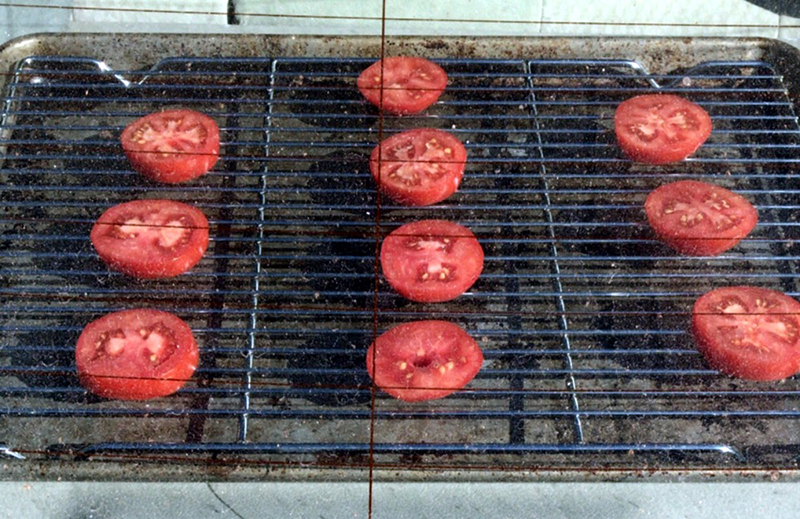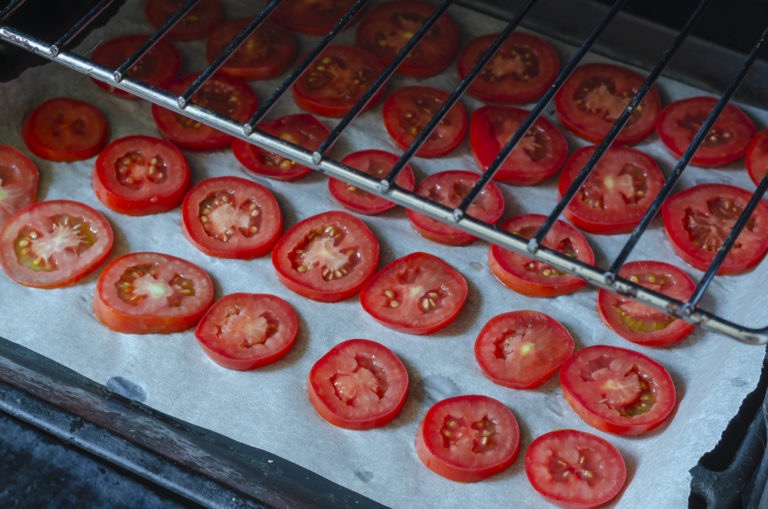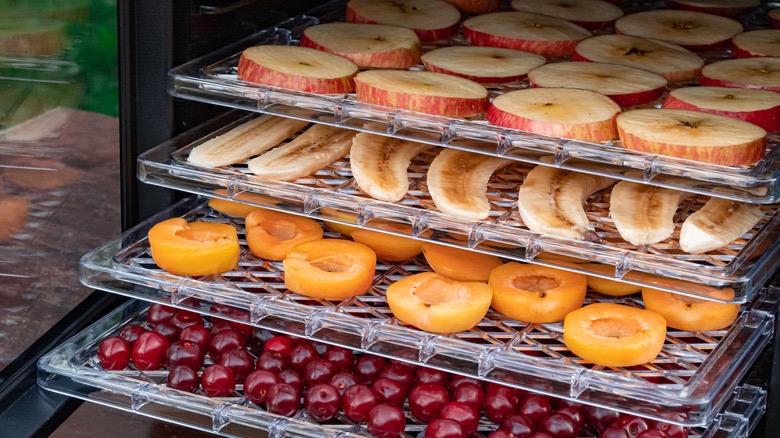
Content Menu
● What is Food Dehydration?
>> Benefits of Dehydrating Food
● Can You Dehydrate Food Without A Dehydrator?
>> 1. Oven Drying
>>> Steps for Oven Drying:
>> 2. Air Drying
>>> Steps for Air Drying:
>> 3. Sun Drying
>>> Steps for Sun Drying:
>> 4. Microwave Drying
>>> Steps for Microwave Drying:
>> 5. Using a Slow Cooker
>>> Steps for Slow Cooker Drying:
● Tips for Successful Dehydration
● Nutritional Aspects of Dehydrated Foods
● Creative Uses for Dehydrated Foods
>> 1. Soups and Stews
>> 2. Snacks
>> 3. Trail Mixes
>> 4. Breakfast Options
● Conclusion
● FAQ
>> 1. What types of food can I dehydrate?
>> 2. How long does it take to dehydrate food using an oven?
>> 3. Can I dehydrate food in humid weather?
>> 4. How do I know when my food is fully dehydrated?
>> 5. Is it safe to eat dehydrated food after long storage?
● Citations:
Dehydrating food is a time-honored method of preservation that has been utilized for centuries. While modern dehydrators make the process easier and more efficient, many people wonder if it's possible to dehydrate food without one. This article will explore various methods of dehydrating food, the benefits of using a dehydrator, and provide tips for those looking to preserve their food without specialized equipment.
What is Food Dehydration?
Food dehydration is the process of removing moisture from food to inhibit the growth of bacteria, yeasts, and molds. By reducing the water content, dehydrated foods can be stored for extended periods without refrigeration. Commonly dehydrated foods include fruits, vegetables, herbs, and meats.

Benefits of Dehydrating Food
- Extended Shelf Life: Dehydrated foods can last for months or even years when stored properly.
- Nutrient Retention: Dehydration preserves most vitamins and minerals.
- Convenience: Dehydrated foods are lightweight and easy to transport, making them ideal for camping and hiking.
- Flavor Enhancement: Concentrating flavors through dehydration can enhance the taste of foods.
Can You Dehydrate Food Without A Dehydrator?
Yes, you can dehydrate food without a dehydrator! Here are several methods you can use:
1. Oven Drying
Using an oven is one of the most common alternatives to a dehydrator.
Steps for Oven Drying:
1. Preheat the Oven: Set your oven to the lowest temperature, usually around 140°F (60°C).
2. Prepare Your Food: Wash and slice your fruits or vegetables evenly to ensure uniform drying.
3. Arrange on Baking Sheets: Place the food on baking sheets lined with parchment paper in a single layer.
4. Drying Process: Keep the oven door slightly ajar to allow moisture to escape. Check periodically and rotate trays if necessary.
5. Cool and Store: Once dried, let them cool completely before storing in airtight containers.
2. Air Drying
Air drying is a traditional method that works best in low-humidity environments.
Steps for Air Drying:
1. Select Fresh Produce: Choose ripe fruits or vegetables free from blemishes.
2. Cut into Pieces: Slice them into uniform pieces for even drying.
3. Use a Drying Rack or String: Place the pieces on a drying rack or thread them on a string (for herbs).
4. Find a Suitable Location: Hang or place your food in a warm, dry area with good air circulation.
5. Monitor for Spoilage: Check regularly for any signs of spoilage or mold.
3. Sun Drying
Sun drying is another effective method but requires specific weather conditions.

Steps for Sun Drying:
1. Choose Sunny Days: Select days with low humidity and plenty of sunshine.
2. Prepare Your Food: Slice fruits or vegetables as needed.
3. Use Screens or Trays: Spread the food out on screens or trays to allow air circulation.
4. Cover with Cheesecloth: Protect from insects by covering with cheesecloth while still allowing airflow.
5. Rotate as Needed: Turn the food occasionally to ensure even drying.
4. Microwave Drying
Microwaves can also be used for quick dehydration but require careful monitoring to avoid cooking the food.
Steps for Microwave Drying:
1. Slice Thinly: Cut your produce into thin slices.
2. Use Microwave-Safe Plates: Arrange the slices on microwave-safe plates in a single layer.
3. Microwave in Intervals: Heat in short intervals (2-3 minutes), checking frequently until dried but not cooked.
4. Cool Before Storing: Let cool completely before sealing in airtight containers.
5. Using a Slow Cooker
A slow cooker can also serve as an unconventional dehydrator by using its low heat setting.
Steps for Slow Cooker Drying:
1. Prepare Your Ingredients: Slice fruits and vegetables as desired.
2. Set Slow Cooker on Low: Place the food inside and set it on low heat with the lid slightly ajar to allow moisture to escape.
3. Monitor Progress: Check periodically until dried to your liking.
4. Cool and Store Properly: Allow cooling before transferring to storage containers.
Tips for Successful Dehydration
- Always use fresh, high-quality ingredients.
- Cut food into uniform sizes for even drying.
- Store dehydrated foods in airtight containers in a cool, dark place to maximize shelf life.
- Label containers with dates to keep track of freshness.
Nutritional Aspects of Dehydrated Foods
Dehydrated foods retain much of their nutritional value compared to fresh counterparts; however, certain vitamins may be affected by the dehydration process:
- Vitamin Loss: Some vitamins are sensitive to heat and light; vitamins A and C are particularly susceptible during dehydration[5]. To mitigate this loss, consider blanching vegetables briefly before dehydration, which can help preserve these nutrients[2].
- Caloric Density: While dehydrating reduces water content significantly, it concentrates calories and sugars per gram compared to fresh foods[5]. This means that while you gain energy from dehydrated snacks like fruit chips, portion control is essential to avoid excessive calorie intake.
- Digestibility: Soaking nuts before dehydration can improve their digestibility by breaking down enzyme inhibitors[2]. This practice enhances nutrient absorption when consumed later.
Creative Uses for Dehydrated Foods
Dehydrated foods are not just convenient snacks; they can also be incorporated into various recipes:
1. Soups and Stews
Dehydrated vegetables can be easily reconstituted in soups or stews:
- Simply soak them in hot water or broth before adding them to your dish.
- For example, adding dehydrated carrots, onions, and bell peppers into a hearty chili can enhance flavor while providing essential nutrients.
2. Snacks
Dehydrated fruits make excellent snacks:
- Apple chips, banana chips, or mango slices provide a sweet treat without added sugars.
- Consider seasoning vegetable chips (like kale or zucchini) with spices before dehydration for an extra flavor kick.
3. Trail Mixes
Combine dehydrated fruits with nuts and seeds for a nutritious trail mix:
- This mix serves as an excellent source of energy during outdoor activities like hiking or camping[5].
4. Breakfast Options
Incorporate dehydrated foods into breakfast dishes:
- Add dried fruits to oatmeal or yogurt for added sweetness and texture.
- Use powdered eggs combined with dehydrated vegetables for quick omelets while camping[6].
Conclusion
Dehydrating food without a dedicated dehydrator is entirely possible using various methods like oven drying, air drying, sun drying, microwave drying, and slow cooking. Each method has its advantages and considerations based on available resources and environmental conditions. With some patience and care, anyone can enjoy the benefits of dehydrated foods at home!

FAQ
1. What types of food can I dehydrate?
You can dehydrate fruits, vegetables, herbs, meats (like jerky), and even some grains like pasta or rice when prepared correctly.
2. How long does it take to dehydrate food using an oven?
The time varies depending on the type of food and thickness of slices but generally ranges from 6 to 12 hours at low temperatures (140°F/60°C).
3. Can I dehydrate food in humid weather?
While it's possible, humid weather makes dehydration more challenging as moisture levels are high; it's best done during dry conditions or indoors using an oven or other methods.
4. How do I know when my food is fully dehydrated?
Properly dehydrated food should be dry but not brittle; it should feel leathery and flexible without any moisture pockets when you squeeze it gently.
5. Is it safe to eat dehydrated food after long storage?
Yes, as long as it has been stored properly in airtight containers away from light and moisture; however, always check for signs of spoilage before consuming any long-stored items.
Citations:
[1] https://www.cnet.com/pictures/tips-for-using-your-new-dehydrator/
[2] https://learn.eartheasy.com/guides/a-beginners-guide-to-dehydrating-food/
[3] https://slowerhiking.com/recipes
[4] https://www.backpackingchef.com/dehydrating-food.html
[5] https://www.webmd.com/diet/dehydrating-food-good-for-you
[6] https://www.thepurposefulpantry.com/cottage-pie-recipe-with-dehydrated-vegetables/
[7] https://www.freshoffthegrid.com/dehydrating-food/
[8] https://www.youtube.com/watch?v=sVtMuWXlyFI
[9] https://www.reddit.com/r/trailmeals/comments/zrjfvp/good_first_couple_dehydrated_meal_recipes_to_try/
[10] https://www.thepurposefulpantry.com/dehydrating-faq/











